The Therapeutic Properties of Icelandic Moss
The official medicine has long recognized the healing properties of Iceland moss. It is part of many drugs and considered a very effective remedy against a number of diseases. Iceland moss or cetraria grows only to 12-16 cm and is actually lichen, a mixture of algae and green or brown mushrooms. Cetraria owes its name to the ancient Romans, originating from the word “cetra”, which means “shield”. There are entire cetraria fields in Iceland, and in the past the local residents constantly added moss to bread, recognizing only such flour products. The most important property of this lichen is its sensitivity to a contaminated environment. You can always order Iceland moss or other healing flowers in Kyiv, the Kyiv region, and other regions of Ukraine online, which will save you a lot of time and effort.
Where Does Iceland Moss Grow?
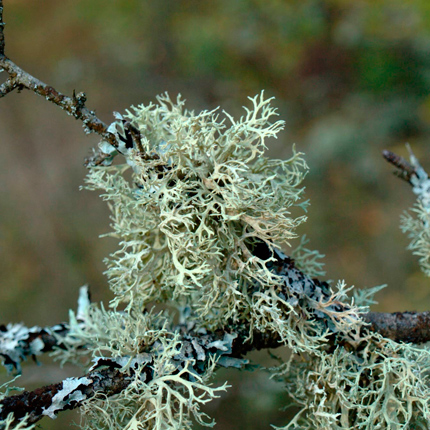
Iceland moss does not grow in poor environmental conditions, which helps determine the state of the atmosphere and the presence of toxic substances in the soil. The healing properties of this lichen have been known since the Middle Ages. It is possible that the living representatives from that era have survived up until now, as Iceland moss can live up to a thousand years. Until the 19th century, it was also widely used in medicine, both folk and official, but after a series of changes and the progress in chemistry, the mankind temporarily lost interest in this medicinal plant. In 1920, it was Iceland moss that saved many people in the far north from starvation. People added the moss to food and used it as an independent product. Iceland moss (Cetraria islandica) grows not only in Scandinavia, but also in Europe, Asia, Africa, and even Australia.
This lichen can be found in the tundra, on the mountain slopes, and in pine forests. It does well on the rocky soil rich in peat, with plenty of sand and light. Cetraria often grows on trees and stumps, being the reindeer’s favorite delicacy. It reproduces by transplanting to favorable soil, but develops very slowly. There are entire fields of this healing lichen in Iceland, which can expand yearly.
Iceland moss grows virtually anywhere it can get to: rocks, slopes, or faults. It can even cover a small hole and endanger an unlucky traveler. The moss fields look their best in the warm season, so keep this in mind if you decide to see the healing lichen with your own eyes. This plant is an epiphyte, which implies the absence of a root system. The lichen also needs a sufficient amount of light, which is why it often grows in the lowlands or the highlands. Depending on the place of growth, it changes its color and becomes covered with a kind of “tan” in areas with good light, turning gray or even black. If Iceland moss has grown in the lowlands or it lacks heat, then it will be almost white.
Chemical Composition

Iceland moss is made up of algae and fungi that live in mutual dependence. Algae are involved in photosynthesis, while fungi supply water and dissolve salts in the plant body. Surprisingly, despite performing diametrically opposed tasks, the fungus and algae work together for the common good. The composition of Icelandic moss includes proteins, fats, polysaccharides, carbohydrates (about 80%), acids, wax, gum, titanium, iodine, trace elements, and starchy substances. More than half of the composition of all lichen’s carbohydrates is lichenin.
It is this polysaccharide that creates a jelly mass when mixed with water. Despite being very nutritious, it is practically not absorbed by the human body. However, it is perfect for the deer, which turns cetraria into an important part of their diet and a real delicacy for them. Many scientists use lichenin as a nutrient base for growing microorganisms and various bacteria. Lichen acids give the moss its bitterness, increase the overall body tone, and help fight pathogenic bacteria. Chitin acts like activated carbon and is also a sorbent. This active substance is useful against psoriasis and some other skin diseases. The combination of D-protolichesteric and usnic acids is what makes this lichen so valuable. Usnic acid is a natural antibiotic and even has good activity against Koch’s bacillus, which causes tuberculosis in children and animals.
Fumaroprotocetraric acid, which is also part of cetraria, makes the moss a natural antiseptic and promotes wound healing. Iceland moss also contains a small amount of vitamins C and B. Silica stimulates collagen synthesis and helps the skin look healthy. The cobalt in the composition of Iceland moss activates the folic acid’s metabolism. The fluorine in cetraria not only helps in the treatment of stomatitis, but also participates in bone growth, which makes the lichen very beneficial for the teeth. Icelandic moss is rich in iron, which the body needs for rapid oxygen delivery, myocardiopathy and fatigue prevention.
All these components make the lichen a multifunctional and absolutely safe natural medicine. The polysaccharides that are present in Iceland moss increase the overall body resistance and function as immunostimulants. The lichen has no contraindications aside from individual reactions. However, you should consult a doctor when using preparations containing Iceland moss – or start with a small dose of the drug.
Medicinal Properties and Indications for Use
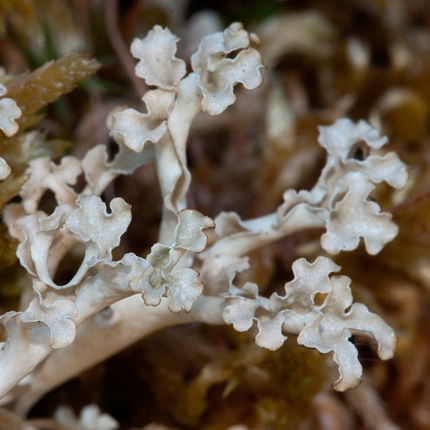
Iceland moss has many beneficial and medicinal properties. It can be used as a sedative, expectorant, antibacterial, antioxidant, or antimicrobial agent; increase the appetite; and inhibit the growth of harmful fungi and pathogenic bacteria. Iceland moss is recommended for such diseases as: acute inflammation of the gastrointestinal tract; food poisoning; gum inflammation, stomatitis, and other diseases of the oral cavity; endocrine diseases; diseases of the genitourinary system in men; tuberculosis, asthma, tonsillitis, and bronchitis; burns, rash, acute dermatitis; chronic fatigue. Let’s look at the benefits of this lichen in more detail.
Stomach Diseases
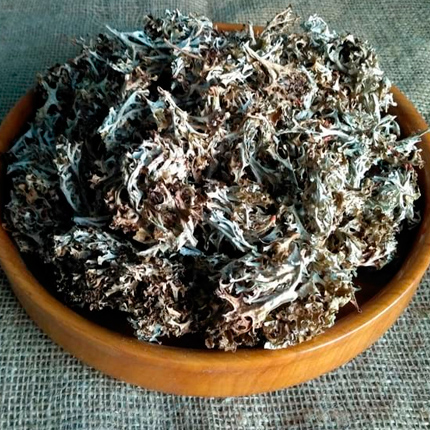
A decoction of Iceland moss envelops the damaged stomach walls and promotes gastric juice production. At the same time, the substances contained in the lichen soothe the intestines.
The acids found in Iceland moss help the body successfully resist intestinal diseases, poisoning, and pathogens. In case of bronchitis, it is recommended to brew a decoction of cetraria for better absorption and the targeted impact on the focus of infection.
Tonic Effect
A large number of useful microelements contained in Iceland moss help restore muscles, relieve fatigue, have a tonic effect, and treat dystrophy.
Dentistry
Dentists recommend rinsing your mouth and drinking Iceland moss for stomatitis and oral diseases. This natural antibiotic will cope with a number of bacteria and will be useful for inflammation. Interestingly, it is recommended to simply put a piece of lichen in your mouth and dissolve it throughout the day.
If there is no natural moss nearby, then you can use tablets or lozenges for resorption. Iceland moss is similar to blackberries in its natural properties. The beneficial properties of blackberries in the fight against bacteria and inflammation have long been proven by doctors. Traditional medicine recommends blackberry decoction and Iceland cetraria decoction to combat colds, flu, and coughs.
Prevention
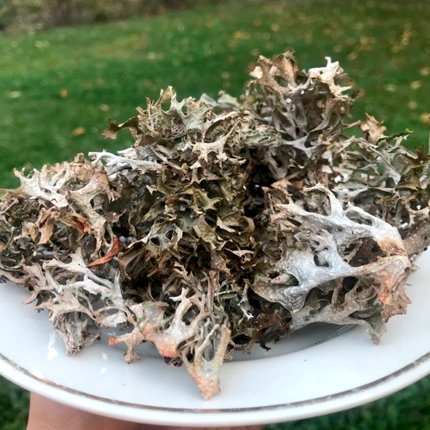
This lichen is widely used to prevent diseases such as endemic goiter, as well as when it is necessary to increase the iodine level in the body. Iceland moss is used as an independent medicine and also frequently found in dietary supplements and homeopathic preparations. It helps improve the iodine level and prevent diseases of the cardiovascular system.
Male Health Issues
It should be noted that doctors recommend using cetraria not only for treatment, but also as a preventive measure with prostatitis and other diseases of the genitourinary system in men. Usnic acid helps maintain sexual performance. It not only stimulates the prostate, but also promotes wound healing. Doctors advise using Iceland moss as an additional remedy in the hemorrhoids treatment.
Female Health Issues
The U.S. scientists have proven the effectiveness of cetraria in the treatment of women’s diseases, such as mastopathy. The active ingredients of this lichen help dissolve seals and restore the body. Incredibly, the moss is even used for internal bleeding.
Infectious Diseases
This lichen envelops the affected areas, alleviating pain and disinfecting the wound thanks to the starch and tannins. The same acid has been successfully fighting tuberculosis, asthma, and bronchitis for more than two centuries. It softens the mucosa, promotes expectoration, and prevents the spread of Koch’s bacillus as well as many other bacteria that provoke the oral cavity and lung diseases.
For Smokers
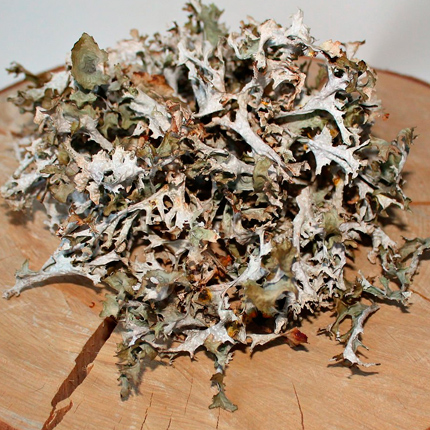
Due to its high starch content and antibacterial properties, Iceland moss can be used as an antiseptic for burns, skin conditions, and cuts. The moss has a strong calming effect on the lungs and will particularly help smokers or those who are trying to quit this bad habit.
Cosmetology
Cetraria is widely used in cosmetology, namely, in soaps, lotions, skin creams, and hair loss products. This lichen is good for acne or psoriasis, gently affecting the skin and restoring damaged areas. Natural soap and healing masks are also made from it.
Allergies
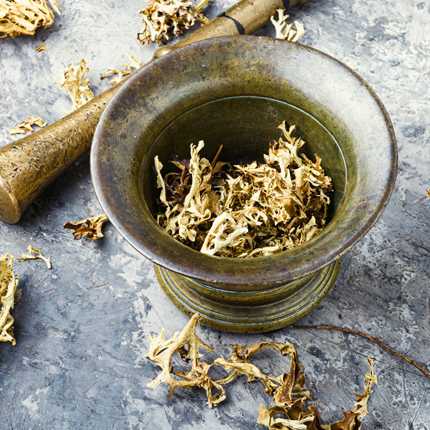
Iceland moss successfully resists allergic reactions. In traditional medicine recipes, it is recommended to drink a decoction of cetraria and do inhalations with lichen tincture for a cold. A few pinches of dry moss are thrown into the boiling water; the patient is covered with a towel and allowed to breathe in the steam. Such inhalations can be done no more than 3 times a day.
Weight Loss
Cetraria is used for weight loss and even for cancer. The substances contained in this lichen help the body tolerate the chemotherapy effects more easily and improve the overall health. Doctors specifically emphasize the fact that, when taken orally, the useful substances (usnic acid, vitamins, trace elements) are almost instantly absorbed into the stomach walls and gastrointestinal tract. A large number of Iceland moss components are excreted from the body by perspiration.
Possible Side Effects
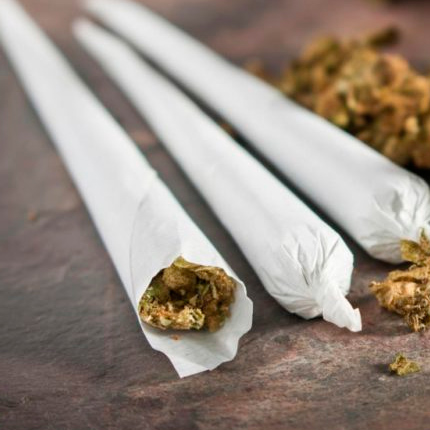
Like any drug, Iceland moss has its contraindications. If you abuse lozenges or decoctions with cetraria, intestine issues and nausea may occur. This healing lichen, despite all its beneficial properties, is not a panacea for all diseases and is best manifested as a prophylactic or additional drug.
Severe illnesses such as tuberculosis or bronchitis are best treated with cetraria as an additional component – and not with it alone. Particular care should be taken by pregnant women, lactating women, and young children. Malignant tumors will progress even with regular use of Iceland moss decoctions, and their treatment must be entrusted to a qualified oncologist.
If you have an overly active bowel, pancreatitis, gastritis, or constipation problems, it is best to refrain from using cetraria. In case of acute gastrointestinal tract diseases and after operations on the intestines or stomach, it is strictly not recommended to take Iceland moss. The salts and poorly digestible carbohydrates can harm the digestive system. Violation of instructions and overdose can lead to nausea, diarrhea, heaviness in the liver, and stomach pain. Iceland moss should also be used carefully with spastic system constipation, autoimmune diseases, cholecystitis, and, especially, with hyperthermia. It is best to consult with your doctor before the systematic use of cetraria.
How to Take Iceland Moss
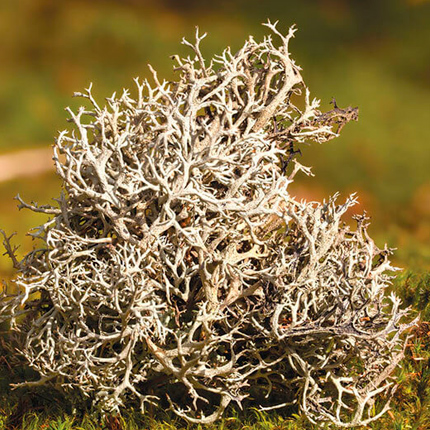
There are many options for the use of cetraria, starting from traditional tablets and lozenges, which are sold in any pharmacy, and ending with decoctions and inhalation baths.
Syrups
The syrups with Iceland moss help with colds and are efficient against respiratory diseases.
Pastilles
These increase immunity and are recommended for colds, ligament diseases, and acute bronchitis (as an adjuvant).
Dry Moss and Cream
Dry moss is popular in folk medicine and is used for colds. The cream helps with ulcers, burns, and skin diseases.
Iceland Moss With Milk
Children often refuse to take Iceland moss due to its specific taste. However, you can kill the smell and get a delicious decoction by brewing dry moss with milk. The decoction should be consumed 3 tablespoons per day for 2 weeks.
Cough Elixir for Children
There are many cough elixirs for children in pharmacies that are based on Iceland moss. Such a drug helps the body create a special protective film on the bronchial mucosa, which reduces coughing and spasms.
Alcohol Moss Tincture
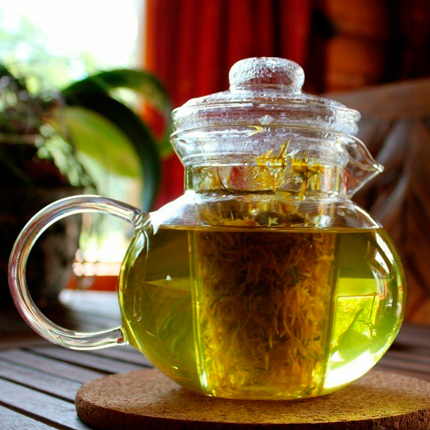
For obvious reasons, this tincture is not recommended for children and people with a drink problem. Thanks to the alcohol or high-quality vodka, it helps a lot in case of cough.
Tea
The 2 teaspoons of dry moss should be mixed with regular tea and poured over with boiling water. Such tea removes phlegm from the body, improves the patient’s tone, and has antibacterial properties. Cetraria tea resembles the soothing mint tea in its qualities. In folk medicine, mint varieties are used for the calming effect, are a good sedative, and improve digestion, just like the medicinal lichen.
Infusion
The 2 tablespoons of moss should be mixed with half a liter of boiling water and left to brew in a dark place for 7-9 hours. During this time, cetraria will give the water beneficial properties. Take a quarter cup of this infusion 2 times a day.
Jelly
Not the most delicious, but an incredibly healthy dish. To make the jelly, you need to put 100 g of moss in a liter of water and leave it there for about 3 hours, then take out the moss, rinse it in cold water, and pour in 500 g of boiling water. After that, salt the jelly to taste, and the dish is table-ready. The jelly improves digestion, battles harmful bacteria, and helps with respiratory system diseases.
Jelly for Constipation
Fill a glass of finely chopped (but not powdered) Iceland moss with 2 liters of boiling water and let it brew for a day. Drink 1 glass of infusion 3 times a day to treat constipation.
Iceland Moss on Kefir
The lichen must be crushed to a state of powder mass. Add honey, kefir, mix and refrigerate overnight. Men are advised to take the kefir tincture to increase potency and eliminate infections. For women, this recipe will help overcome the consequences of mastopathy.
Moss Ointment
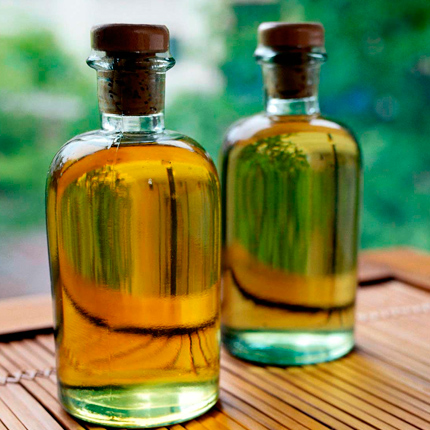
Anyone can prepare a healing ointment on their own. To do this, you need to take the dry concentrate and grind it into powder, then add 1 tablespoon of dry lichen, petroleum jelly, and hold for 4-6 hours in a water bath. The resulting ointment can be used both in cosmetology and in the treatment of skin diseases or bruises.
Cetraria With Milk
This decoction is used as a sedative at bedtime and for treating acute cough. Two tablespoons of dry moss should be poured over with a cup of milk and boiled over low heat for half an hour. It is recommended to take two tablespoons of decoction before going to bed; honey can be added to your taste.
Whooping Cough Tincture
You will need dry moss and thyme to prepare this very simple and effective remedy. Just add half a tablespoon of moss and half a spoon of thyme; pour in the boiling water and let it brew for 5-10 minutes. The decoction should be taken 3 times a day in case of acute whooping cough forms.
